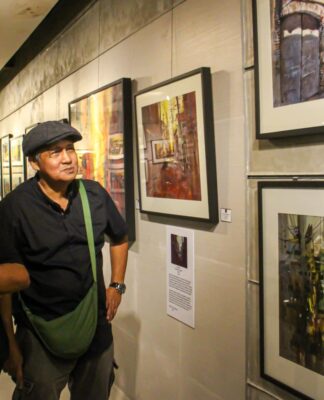April 2, 2016, 1:59p.m. – FR. HERMINIO Dagohoy, O.P. stepped down as Rector last March 31, completing a first term marked by big-ticket building projects, efforts to boost the University’s international profile, and a fourth papal visit.
Vice Rector Fr. Richard Ang, O.P. assumed the post of acting Rector, starting the tedious process of electing the next head of Asia’s only pontifical and oldest university.
“It is in the statutes of UST. [Fr. Ang] will be the acting Rector [until] the next rector assumes the office,” Fr. Dagohoy, UST’s 96th rector, told the Varsitarian.
The decision on who will be the next rector will come from the Congregation for Catholic Education, the office or dicastery in the Vatican responsible for Catholic educational institutions, said Fr. Dagohoy.
Fr. Ang, dean of the Ecclesiastical Faculty of Philosophy, finished philosophy at the Faculty of Arts and Letters in 1990, sacred theology at the Faculty of Sacred Theology in 1997, master of arts in theology in 1999, and doctor of philosophy in 2010.
Choosing the next rector
UST rectors have traditionally been reelected to a second term, as in the case of Fr. Norberto Castillo, O.P. (1982-1986 and 1986-1990), Fr. Rolando de la Rosa, O.P. (1990-1994 and 1994-1998), and Fr. Tamerlane Lana, O.P. (1998-2002 and 2002-2006).
The process of choosing a rector is akin to the selection of a diocesan bishop, involving a closed-door meeting of Dominican friars. The Dominican fathers in the UST Priory, together with other Dominican fathers teaching in UST, will hold a convocation where they will nominate three candidates. The meeting is called by the vice rector, who automatically becomes the acting Rector after the incumbent’s term ends.
The University vice chancellor, Fr. Gerard Francisco Timoner, III, O.P., is tasked to approve the three candidates and present the names to the Academic Senate, which will then scrutinize and rank the candidates. The senate is composed of the vice chancellor (the head of the Dominican Province of the Philippines), the vice rectors, deans, and the secretary general.
The vice chancellor then transmits the names to the Board of Trustees, composed of the vice chancellor, the vice rector, the vice rector for finance, the secretary general, and other Dominican friars.
The names and credentials of the chosen candidates will then be submitted to the Master of the Order, Fr. Bruno Cadoré, O.P. The Master endorses the chosen “candidates” to the Vatican’s Congregation for Catholic Education for final evaluation.
The Holy See will then issue the declaration “nihil obstat,” Latin for “nothing obstructs” or “there is no obstacle,” and gives the name back to the Master of the Order, who makes the official appointment. Jerome P. Villanueva














